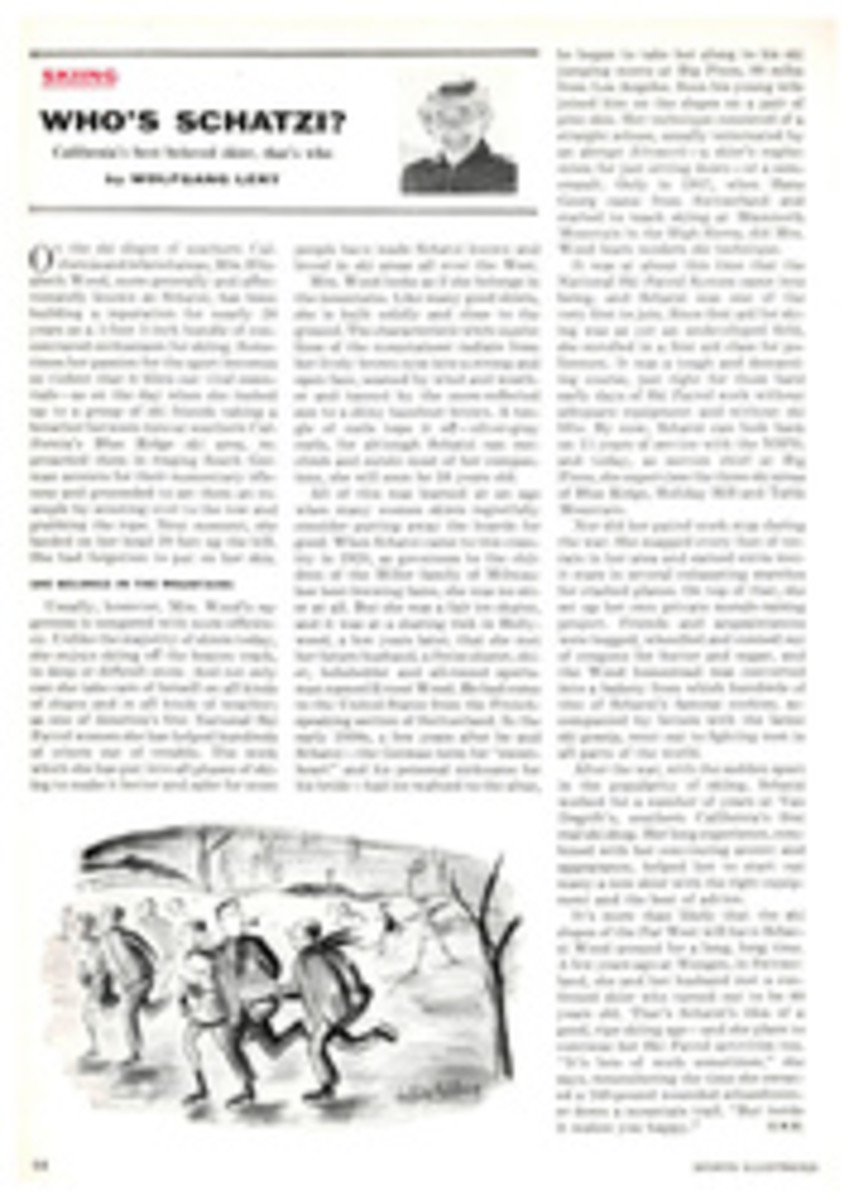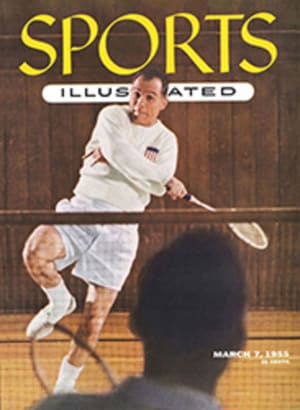
SAMMY'S GOLDEN RULE
There is a particular interest in the meeting at Kansas City, Mo. this week of 32 small-college basketball teams to determine the champion of the National Association of Intercollegiate Athletics. Among the 450 educational institutions which make up the NAIA, the College of Idaho (student body: 500) is a dark horse which has been rocketing to the front ranks in a manner seemingly miraculous. The reason is that the Coyotes, steady cellar-dwellers, have devised one of the niftiest systems yet employed to build top teams in spite of the superior buying powers of their big-name rivals.
The man who developed the C of I system to payoff proportions is squat Sammy Vokes, who arrived at the Caldwell, Idaho school just a few years ago as head basketball coach and football line coach. When Sammy arrived sports at C of I were at a low ebb. The Coyotes were the door mat of competition in the six-small-school Pacific Northwest Intercollegiate Conference. Gate receipts at one basketball game in the 1,000-seat college gym had hit an alltime low of $2.40.
Operating on the sound principle that everybody loves a winner, Sammy started to search for talent. With Eddie Cole, then athletic director of C of I and football coach, Sammy spread the word in California that he was interested in good players. Among the first to turn up was Santa Monica high school star R. (for Raleigh) C. Owens, a first-rate football player as well as a basketball star. Owens came in a contingent of athletically talented California youths which surprisingly slipped through the dragnet thrown out by the large Pacific Coast Conference colleges.
Actually, they had not escaped unnoticed. But in the case of Owens and several others their scholastic abilities were not quite comparable to their athletic powers, and there was some doubt whether they could meet the entrance requirements at the PCC schools.
The College of Idaho, however, was ready and willing to receive them. Less rigid in its entrance requirements, C of I would accept a student who had poor grades even in courses such as typing, bookkeeping, business law and salesmanship. Owens along with his athletically inclined colleagues headed north.
At the College of Idaho, Owens, like other athletes, reportedly receives free tuition, books, $35 a month for working in the gym. Owens got a job at the town swimming pool to carry him over the summer. He has two private tutors to support him through any academic difficulties—even C of I athletes can flunk out.
For value received Owens gives C of I ample return. As a football player last year he earned the position of end on the Little All-America team and his basketball play is only slightly less impressive.
MORE RECRUITS
This year Sammy's system really began to pay off. Two more sensational recruits, Elgin Baylor and Gary Mays of Washington, D.C., joined the basketball team. Baylor, a 6-foot 6-inch schoolboy flash at Springarn Tech, averaged 34 points a game. Mays, known as "The Bandit" because he lost an arm in a childhood accident, captained the Armstrong Tech team, made Washington's All-Metropolitan squad, caught for the baseball team, ties his shoes and shoots a fine game of pool—" 'Course I use a bridge," Mays (no kin to Willie) qualifies.
Burdened by personal problems or after-school work, both Baylor and Mays had marks that were well below the average of their high school classes. When a friend of Sammy's alerted them to the call of the West they eagerly enrolled at the College of Idaho. With the change in locale, Baylor turned into something of an academic whizz as well as a basketball star as he brought in a string of B's in his first semester at Caldwell.
And what does the formula do for the college? The Coyotes just ended their Pacific Northwest Conference games this year with a 15-0 record, and they had to turn customers away at the Caldwell gym. At the College of Idaho everybody wins.

